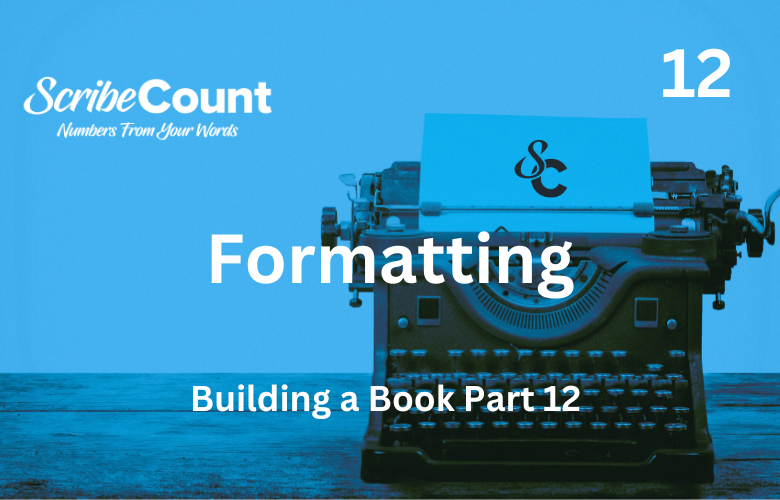Formatting a Self-Published Novel in All Formats
Formatting a self-published novel is a crucial step that transforms a raw manuscript into a polished, professional-looking book. The process requires careful attention to detail and an understanding of the requirements for different formats, including print and digital. Each book format and distribution platform has unique specifications, which means authors often need separate files for each version. This article will guide you through the formatting process, explaining each section of a book, why professional formatting matters, and what software is available for authors who choose to do it themselves.
The Order of Book Sections and Their Formatting
Cover Art
The cover is the first impression a book makes. It must be high-resolution and formatted correctly for the specific printing service. Print books require a full-wrap cover, while eBooks use a front cover only. Different platforms may have different size requirements, meaning multiple versions of cover files are often needed.Half-Title Page
This page contains only the book’s title and acts as a preliminary introduction before the main title page.Title Page
The full title page includes the book’s title, subtitle, author’s name, and publishing imprint, if applicable.Copyright Page
This page contains copyright information, disclaimers, the ISBN, publication date, and any credits for cover designers, illustrators, or editors.Dedication Page
If the author wishes to dedicate the book, this page comes next and typically contains a short, centered dedication message.Table of Contents
More common in non-fiction, the TOC outlines the book’s structure. In digital formats, it must be hyperlinked for easy navigation.Foreword/Introduction
A foreword (written by someone other than the author) or an introduction (by the author) provides context or insights into the book’s purpose.Prologue
For novels that require a setup before the main story, the prologue comes before the first chapter.Main Content (Chapters and Scenes)
This is the heart of the book. Formatting must be consistent in font, spacing, paragraph indentation, and scene breaks.Epilogue
If the story has an epilogue, it follows the last chapter and provides closure.Acknowledgments
A place for the author to thank those who helped with the book.Epigraphs
Some books open with a quote or short text that sets the tone.Illustrations
Books with images must ensure proper placement and resolution. Print and eBook versions may require different file formats.Indexes
Non-fiction books often include an index, which requires careful formatting to align with page numbers.Author Bio
A short biography of the author, often placed in the back of the book or on the dust jacket of hardcovers.Author Picture
A professional author photo may be included on the back cover or bio section.ISBN
Each format (paperback, hardcover, eBook) requires a unique ISBN, typically listed on the copyright page.Back Matter
Includes additional sections such as:Afterword – Additional commentary from the author.
Appendix/Addendum – Supplemental information.
Endnotes – Citations or footnotes.
Bibliography – References for non-fiction books.
Coming Soon/Read More – A preview of upcoming books.
Also By – A list of the author’s other works.
QR Codes – Modern books may include QR codes linking to author websites, social media, or bonus content.
The Process of Formatting a Novel
A professional formatter ensures that the manuscript meets industry standards. Formatting involves:
Ensuring consistency in font, spacing, and indentation
Applying appropriate chapter headings and page breaks
Adjusting margins and trim sizes for print editions
Embedding hyperlinks and dynamic TOCs for eBooks
Correcting image placements and resolution for illustrations
Exporting final files in platform-specific formats (PDF for print, EPUB for eBooks, MOBI for Kindle, etc.)
Each format and platform has unique requirements. KDP (Kindle Direct Publishing), IngramSpark, and BookVault all have different trim sizes, margin settings, and file types, meaning separate versions must be created for each. Additionally, eBooks require a reflowable format, meaning the text dynamically adjusts to different screen sizes rather than staying fixed like a print book layout.
The Need for Separate Cover Art Files
Print books require a full wraparound cover, which includes the spine and back cover. The spine width depends on the number of pages and paper type, meaning the same book may require different cover designs for Amazon KDP and IngramSpark.
EBook covers, on the other hand, are typically just a front cover image, formatted for digital screens. Audiobook covers have their own square dimensions (usually 2400x2400 pixels), making it essential for authors to work with designers who understand these requirements.
Software for Formatting
Several software programs are available for authors who want to format their own books:
Vellum – Mac-exclusive software that simplifies print and eBook formatting.
Atticus – A cross-platform tool designed for authors.
Adobe InDesign – Professional-level software with a steep learning curve but high-quality output.
Scrivener – Great for writing and basic formatting.
Calibre – A free tool for converting and organizing eBooks.
Microsoft Word – Can be used with templates but lacks advanced formatting features.
While these tools provide flexibility, they require time and effort to master.
Hiring a Professional Formatter
Due to the complexity of formatting, many authors hire a professional formatter. A skilled formatter ensures the book meets industry standards, eliminating errors that might make a book look unprofessional. For authors new to self-publishing, this is often a worthwhile investment to ensure quality and reader satisfaction.
Conclusion
Formatting a self-published novel requires an understanding of book structure, platform requirements, and software tools. Whether an author chooses to format their book themselves or hire a professional, careful attention to detail is essential. The right formatting transforms a manuscript into a polished, market-ready book that meets reader expectations and industry standards.

